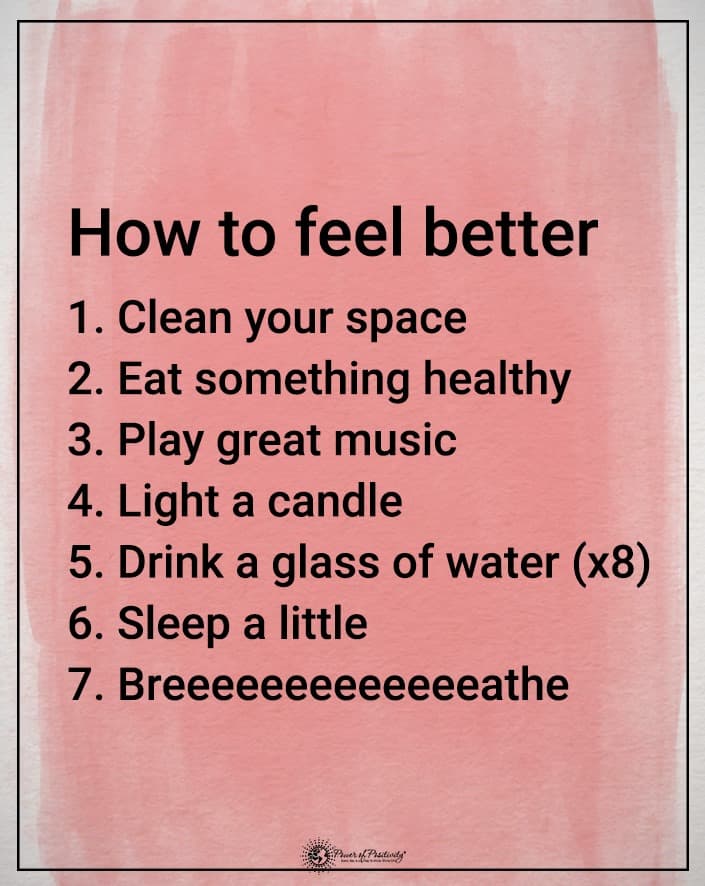Bad habits can come in many forms, ranging from smoking, overeating, procrastination, nail-biting, and even negative thinking. These habits can be difficult to break because they have become ingrained in our daily routines. Harmful behaviors often link to our emotions and thoughts. As a result, bad habits can significantly impact our physical and mental health.
They often lead to weight gain, anxiety, depression, and other health issues. They can also affect our productivity and performance, causing us to fall behind on work and miss opportunities. Despite the challenges, breaking bad habits is achievable with the right approach. The key is to understand the root cause of the habit and then implement a plan to change it.
Many individuals have successfully broken their bad habits by following five simple steps. To break bad habits, you need to identify them, understand the triggers, and replace them with positive ones. Start small and stay motivated. Each step is critical in breaking a bad habit and building a healthier and more positive lifestyle.
Anyone can break bad habits by implementing these steps and staying committed. Making positive changes in your life requires some effort and commitment. It’s essential to remember that breaking bad habits takes time and effort, but the benefits of doing so are worth it. Breaking these habits can help you live a happier, healthier life.
Why Do People Develop Bad Habits?
There are many reasons why people develop bad habits, and it can vary from person to person. One of the most common reasons is stress and anxiety. People often turn to bad habits to cope with stress, whether smoking, drinking, overeating, or even procrastination. The temporary relief that these habits provide can make them difficult to break. Individuals may continue to engage in them even though they know they are harmful.
Another reason why people have bad habits is boredom. People with nothing to do may turn to habits like nail-biting, fidgeting, or excessive social media use. These habits can provide a temporary distraction from boredom. But over time, they can become ingrained in our routines and lead to negative consequences. Social pressure can also contribute to bad habits. Peer pressure can lead individuals to engage in behaviors they know are bad for them, such as smoking or drinking. When everyone around us is doing something, resisting the pressure and making a different choice can be challenging.
Lastly, there may be underlying psychological factors that contribute to bad habits. For example, low self-esteem, depression, or anxiety disorders may lead individuals to misbehave. Usually, these behaviors provide temporary relief but ultimately have negative consequences. Understanding the underlying reasons behind bad habits is essential to break them successfully. By identifying the root cause of the habit, individuals can develop strategies to overcome them.
The 5 Steps to Breaking Bad Habits
Let’s look at the five steps to making changes for the better.
1. Identify the Harmful Behaviors
The first step to breaking a harmful pattern is essential. It requires an individual to be honest with themselves about their behavior. Taking the time to reflect on daily routines and identify the specific behavior that needs to be changed is critical. It’s a way to break the cycle of negative behavior.
Being specific about the habit is essential, which helps clarify the behavior and its reasons. Identifying the habit can be challenging because it has become a routine behavior that feels natural.
Identifying a bad habit requires self-awareness and reflection. A habit can be considered harmful if it harms one’s life, health, relationships, or productivity. It’s also important to consider whether the behavior is unconscious or automatic.
Habits are often automatic behaviors that don’t require much thought or effort, and it can be challenging to break them. For example, if someone bites their nails without thinking, it may be a bad habit that requires conscious effort to break. However, it’s essential to understand that habits can be changed. And the first step is to acknowledge the habit’s existence.
2. Understand the Triggers of Bad Habits
The second step to breaking a bad habit is identifying the triggers that cause the behavior. Triggers are the specific cues or stimuli that cause an individual to engage in the bad habit. They could be emotions, situations, or even people. For example, someone who has a habit of biting their nails may do so when they feel anxious or stressed.
If someone wants to stop smoking, they need to identify the times and situations when they tend to smoke. This could be during social events, after meals, or when they feel stressed. Understanding the triggers that lead to a bad habit is crucial because it enables individuals to develop strategies to avoid or mitigate them.
For example, if stress triggers a harmful behavior, an individual may need to find alternative ways to manage stress. Such alternatives can be deep breathing, meditation, or exercise. If a particular person triggers the practice, it may be necessary to limit or avoid contact with that person, at least temporarily.
One effective way to identify triggers is to keep a journal or log of the behavior. This can help track when and where the behavior occurs and any associated emotions or situations. Additionally, it’s essential to be mindful of the current triggers. Pay attention to the thoughts and emotions that precede the behavior.
3. Replace Bad Habits with Positive Habits
The next step to breaking a bad habit is replacing it with a positive one. This step is crucial because it helps fill the void the bad habit leaves. It provides a healthier alternative behavior. By doing so, individuals can gradually shift their focus and attention from negative behavior to positive one.
To replace a bad habit with a positive one, it’s essential to identify a behavior that aligns with one’s values. For example, if someone wants to stop eating junk food when stressed, they can replace it with exercise or meditation. These positive habits can help to reduce stress levels and promote physical and mental well-being.
It’s also important to start small and make gradual changes. Changing habits takes time and effort, and it’s essential to be patient and persistent. For example, if someone wants to exercise regularly, they can begin with short and simple workouts. They can then gradually increase their intensity and duration.
Another helpful strategy is to create a plan and set specific goals. This can help to stay motivated and track progress. For example, setting a goal to exercise thirty minutes a day, five days a week, can be a helpful starting point. Even if it seems small, it’s the best strategy for someone who wants to replace a bad habit with exercise.
4. Start Small
Another step is to start small and set achievable goals. Often, people become overwhelmed and discouraged when trying to break a harmful habit because they set unrealistic expectations for themselves. By starting small, an individual can build momentum and gain confidence as they progress towards their goal.
For example, if someone wants to start exercising daily but has never exercised before, they can begin by taking a ten-minute walk. Gradually increasing the workout’s duration and intensity can help make it more sustainable and enjoyable. It’s also important to celebrate small successes along the way. Recognizing progress and rewarding oneself for achieving small milestones can help to stay committed to breaking the routine.
For example, treating oneself to a favorite meal or a relaxing activity is a nice reward for your achievements. You can do this after completing a week of exercise to acknowledge your progress and keep the momentum going. Additionally, it’s helpful to track progress and adjust as needed.
This could involve keeping a journal or using an app to monitor progress toward the goal. It’s essential to be flexible and willing to change the plan if it’s not working. For example, if someone finds it challenging to exercise in the morning, they can try exercising in the evening instead.
5. Stay Motivated as You Seek to Break Harmful Routines
Lastly, staying motivated throughout the process is essential for breaking a bad habit. It’s essential to remember that breaking a behavioral pattern takes time and effort, and it’s not always a linear process. It’s normal to experience setbacks and slip-ups along the way, and it’s important not to be too hard on oneself.
Just like mentioned above, celebrating small achievements can help to stay motivated and build momentum towards achieving the ultimate goal. Recognizing progress, no matter how small, and acknowledging the effort and dedication of breaking a habit is essential.
It’s also essential to have a support system in place. Sharing your goals with friends or family members can help to hold oneself accountable and receive encouragement and support when needed. Joining a support group or seeking the help of a therapist can also provide additional support and guidance throughout the process.
Staying motivated requires a positive mindset. Focus on the benefits of breaking the harmful habit and its positive impact on one’s life. Surround oneself with positivity and affirmations that reinforce the goal of breaking the habit. Remind oneself that breaking a behavioral pattern is a journey, and every step towards progress is successful.
Final Thoughts on Some Steps to Breaking Bad Habits
breaking bad habits is essential for personal growth and self-improvement. While it may seem challenging, identifying, understanding triggers, replacing, starting small, and staying motivated can make the process achievable. The first step of identifying the habit is critical in breaking the cycle of negative behavior.
Understanding the triggers that lead to bad habits and replacing them with positive things is also essential. Starting small with achievable goals and staying motivated throughout the process can help break the pattern and develop positive behaviors. It’s important to remember that breaking a bad habit is a journey, and it takes time.
There may be setbacks, but it’s essential to celebrate small achievements and keep pushing forward. By following the five steps, individuals can overcome bad habits, improve their daily lives, and achieve personal growth. Breaking a bad habit may seem daunting, but achieving lasting positive change is possible with the right approach and mindset.



















